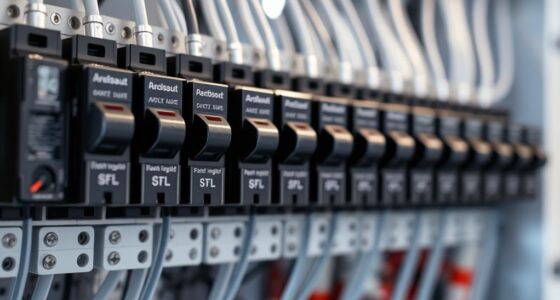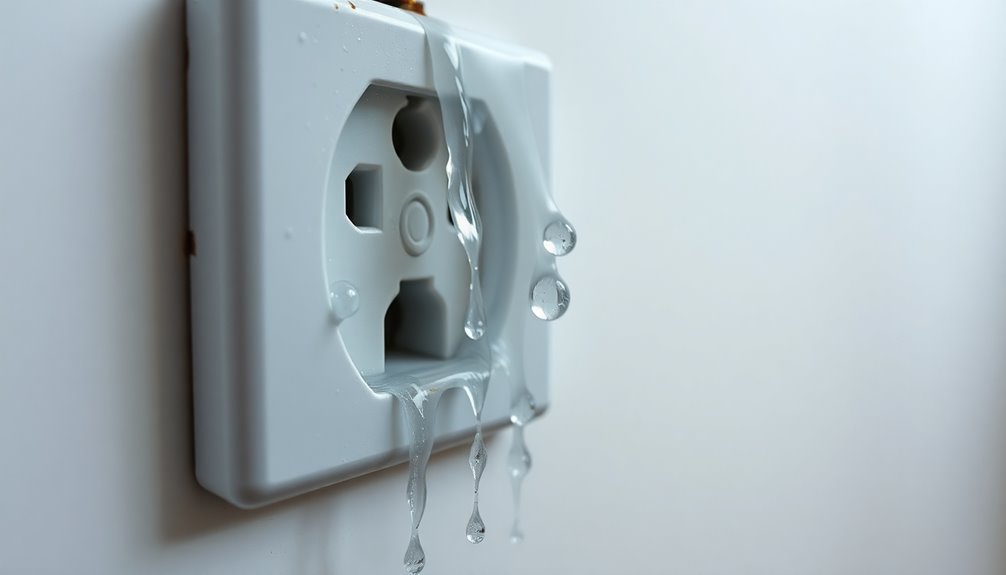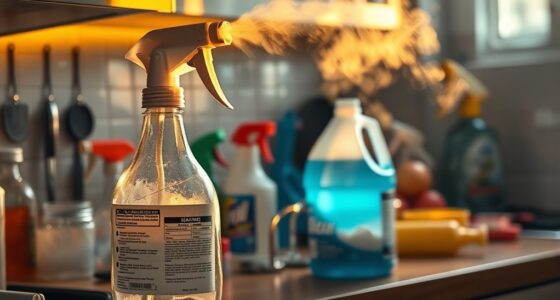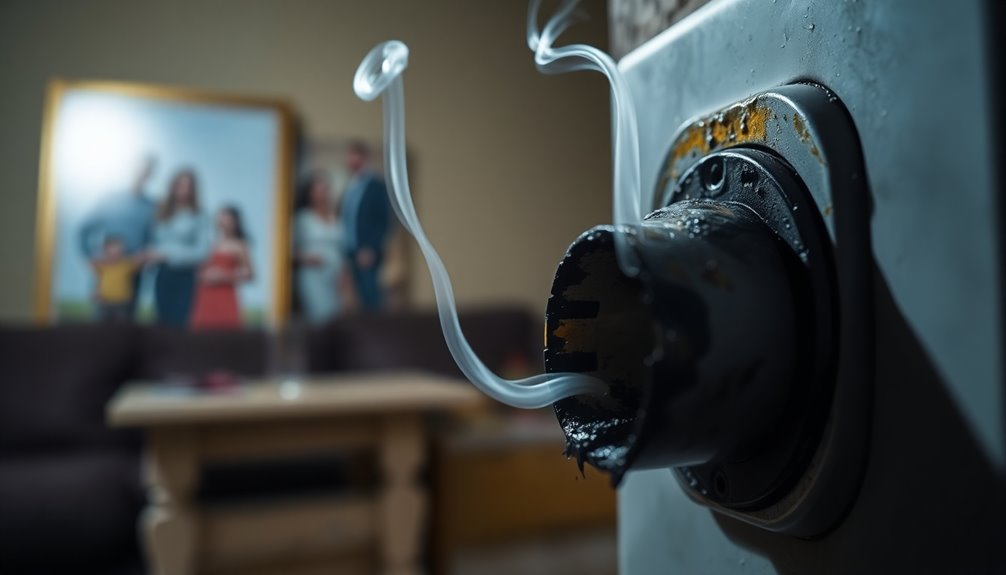Carbon monoxide is an odorless, colorless gas that’s deadly when inhaled in high amounts. It binds tightly to your hemoglobin, preventing oxygen from reaching your brain and organs. Common sources include faulty gas appliances, fireplaces, or car exhaust fumes. Symptoms like headaches, dizziness, and nausea can indicate poisoning. To stay safe, install detectors, maintain appliances, and know what to do if you suspect a leak. Keep going to learn how to protect those you love.
Key Takeaways
- Carbon monoxide is a colorless, odorless gas that can cause poisoning without any detectable smell.
- It binds tightly to hemoglobin, preventing oxygen from reaching vital organs.
- Common sources include faulty gas appliances, fireplaces, and vehicle exhaust fumes indoors.
- Symptoms of CO poisoning include headache, dizziness, nausea, and confusion, often mistaken for flu.
- Installing CO detectors and maintaining appliances are essential for preventing deadly exposure.
Understanding How Carbon Monoxide Affects the Body

Carbon monoxide (CO) is a colorless, odorless gas that can quickly harm your body when inhaled. Once you breathe it in, CO enters your bloodstream and binds tightly to hemoglobin, the molecule responsible for carrying oxygen. This prevents your blood from delivering oxygen to your organs and tissues, which can cause symptoms like dizziness, headaches, and weakness. If exposure continues or is severe, your brain and heart become deprived of oxygen, leading to confusion, loss of consciousness, or even death. Because CO prevents oxygen from reaching essential parts of your body, even small amounts inhaled over time can cause serious health issues. Recognizing how CO affects your body underscores the importance of early detection and prevention. Additionally, using air purifiers with appropriate filtration can help reduce indoor CO levels and protect your health.
Common Sources of Carbon Monoxide in the Home

Many household devices and appliances can produce carbon monoxide if they’re not properly maintained or used incorrectly. Common sources include furnaces, water heaters, fireplaces, and gas stoves. Running these devices in poorly ventilated areas increases the risk of CO buildup. Car exhaust fumes from attached garages can also seep indoors. To help you identify potential hazards, here’s a quick overview:
| Source | How it Produces CO |
|---|---|
| Gas appliances | Incomplete combustion |
| Fireplaces and wood stoves | Burning fuel without proper venting |
| Car engines | Exhaust fumes entering home |
| Gas-powered tools | Malfunction or improper use |
Ensuring that these devices are regularly inspected and maintained can significantly reduce the risk of carbon monoxide poisoning. Stay vigilant, ensure proper maintenance, and never ignore ventilation needs to keep your home safe.
Recognizing Symptoms of CO Poisoning

Since carbon monoxide is odorless and colorless, you might not realize you’re exposed until symptoms appear, making it essential to recognize the signs early. Common symptoms include headache, dizziness, weakness, nausea, and confusion. You might also experience shortness of breath or chest pain. These symptoms often resemble flu or food poisoning, which can be misleading. If you notice these signs, especially if they improve after leaving the house, it could indicate CO poisoning. In severe cases, you may become unconscious or experience seizures. Recognizing these symptoms promptly is imperative because continued exposure can lead to serious health issues or death. Montessori Toys emphasize the importance of safety and proper environment, which is crucial in preventing such hazards. Trust your instincts—if symptoms worsen or don’t improve, seek fresh air immediately and get medical help right away.
Essential Safety Measures and Prevention Tips
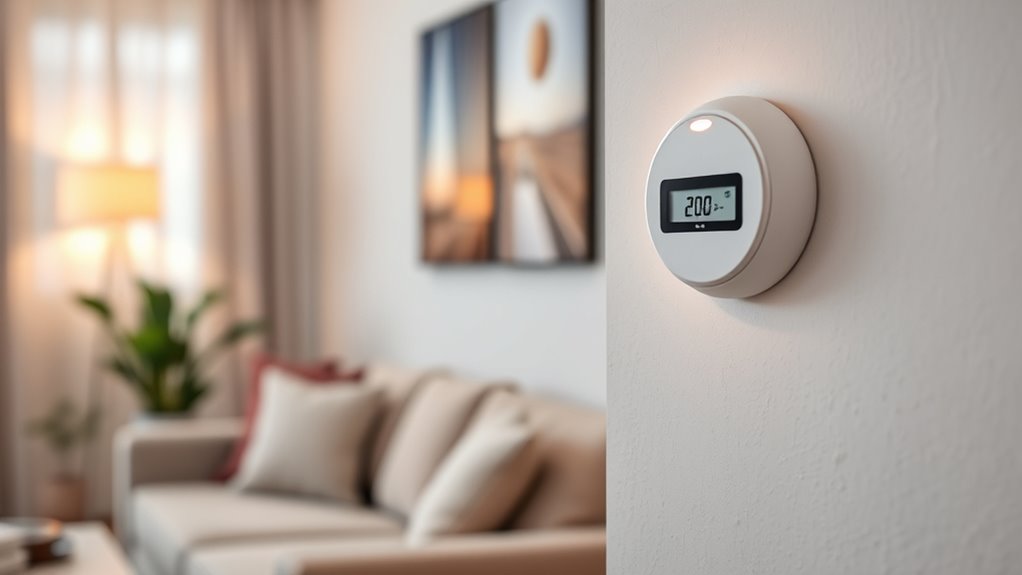
To safeguard yourself from carbon monoxide poisoning, taking proactive safety measures is essential. Start with installing carbon monoxide detectors on every level of your home, especially near sleeping areas. Regularly test these alarms and replace batteries annually. Confirm all fuel-burning appliances are properly maintained and vented to the outside. Never use outdoor grills, generators, or charcoal burners indoors. Also, avoid running your vehicle in an enclosed garage, even with the door open. Finally, educate everyone in your household about CO risks and symptoms. By following these safety tips, you reduce the chance of CO buildup and protect your loved ones from silent dangers. Remember, prevention is your best defense against this odorless, deadly gas. Incorporating expert voice actors into your safety messages can help make these warnings more memorable and impactful.
What to Do If You Suspect a CO Leak

If you suspect a carbon monoxide leak, act immediately to protect yourself and others. First, get everyone outside into fresh air as quickly as possible. Do not try to locate or fix the source yourself; leave that to professionals. Call emergency services or your local fire department right away to report the leak. If you have a carbon monoxide detector and it’s sounding, follow its instructions — usually involving evacuating immediately. Avoid re-entering the building until authorities declare it safe. If anyone shows signs of CO poisoning, like headache, dizziness, or nausea, seek medical attention immediately. Remember, CO is odorless and invisible, so trusting your detector and instinct is vital for safety. Acting swiftly can save lives. Additionally, understanding the importance of proper ventilation can help prevent dangerous buildup of carbon monoxide indoors.
Frequently Asked Questions
How Quickly Can Carbon Monoxide Poisoning Become Fatal?
You wonder how fast carbon monoxide poisoning can become deadly. It depends on exposure levels; high concentrations can cause symptoms within minutes, and death can occur in less than an hour. Even lower levels over time can be dangerous, leading to unconsciousness or brain damage. If you suspect CO poisoning, get fresh air immediately and seek emergency help. Don’t wait—early action can save your life.
Are Certain Populations More Vulnerable to CO Poisoning?
Certain populations are more vulnerable to CO poisoning, and you should be especially cautious. Infants, pregnant women, the elderly, and people with existing health conditions like heart or respiratory issues are at higher risk. These groups have weaker immune systems or reduced ability to eliminate toxins, making CO exposure more dangerous for them. Always guarantee proper ventilation and functioning CO detectors to protect yourself and loved ones from unseen threats.
Can Pets Detect Carbon Monoxide Leaks Before Humans?
They say a dog is a man’s best friend, and sometimes that’s true. Pets can sometimes detect carbon monoxide leaks before humans because they’re more sensitive to changes in their environment. You might notice your pet acting unusually, such as restlessness or vomiting, warning you of danger. While their instincts help, never rely solely on your pet’s behavior—install a carbon monoxide detector for safety.
How Often Should I Test My Home’s CO Detectors?
You should test your home’s CO detectors at least once a month to make certain they’re working properly. Regular testing can help you catch any malfunctions early. Also, replace the batteries twice a year, or immediately if the detector chirps. Remember, CO detectors have a lifespan of about 5 to 7 years—check the manufacturer’s instructions for specific replacement recommendations. Staying vigilant keeps you and your loved ones safe.
What Are the Long-Term Health Effects of Low-Level CO Exposure?
You’re wondering about the long-term health effects of low-level carbon monoxide exposure. Even at low levels, prolonged exposure can cause headaches, dizziness, and fatigue. Over time, it may lead to more serious issues like heart problems or neurological effects. To protect yourself, make certain your detectors are working properly, and get regular checks if you use appliances that produce CO. Staying vigilant helps prevent hidden health risks.
Conclusion
Don’t wait until it’s too late—install a carbon monoxide detector and guarantee proper ventilation. Some might think CO leaks are rare or won’t happen to them, but accidents can occur unexpectedly. Staying vigilant and prepared keeps you safe, even if you believe your home is secure. Remember, CO is odorless and deadly, so taking simple precautions now could save your life and your loved ones’. Stay alert and protect what matters most.


